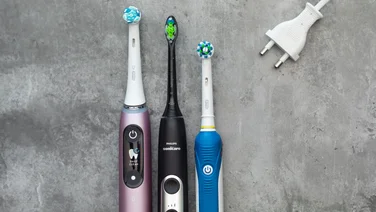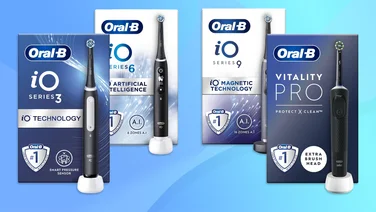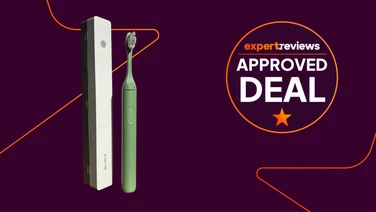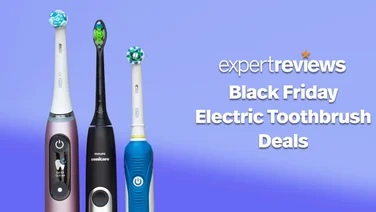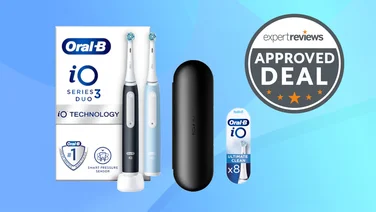To help us provide you with free impartial advice, we may earn a commission if you buy through links on our site. Learn more

It can be tricky to stay on top of your oral health while still being environmentally conscious. Even the best electric toothbrush won’t eliminate your carbon footprint, and you’ll still need to replace your toothbrush – or at least the brush head – every three months. That means the average person will throw out over 300 toothbrushes in their life.
Typical British households create over 26 million tonnes of waste each year – that’s the equivalent weight of 260 large cruise ships – and while 12 million tonnes of this waste is recycled, 14 million tonnes will be sent to landfill sites.
If you’re wondering how much of this excessive waste statistic is toothbrush-based – you might be surprised – read on.
How many toothbrushes end up in landfill each year?
In 2020, a survey run by the Oral Health Foundation found that two-thirds (67%) of UK adults use an electric toothbrush to brush their teeth. That was a 52% increase over the previous five years. It’s safe to assume the number has risen since 2020 but, even if it hasn’t, it still leaves up to 17 million people using manual toothbrushes.With the total UK adult population having hit around 53 million people by mid-2022, if everyone followed the recommended guidance to replace their brushes every three months – in other words, using four manual toothbrushes or electric brush heads each year – that’s about 212 million toothbrush heads or manual toothbrushes being thrown away each year, or more than 580,000 every day.
It’s a pretty sizable tonnage too. Our testing suggests that an average toothbrush head weighs 6g, and an average manual toothbrush weighs 20g – this means almost 2,300,000kg (2,300 tonnes) of waste is just from toothbrushes.
How much waste is in a toothbrush?
A regular manual toothbrush is usually made from polypropylene plastic, nylon and rubber. While most of these materials are recyclable, if they end up in landfill it can take 500 years for all that plastic to decompose. Unfortunately, since most plastic toothbrushes are a mix of materials, it can be difficult – if not impossible – to separate these for recycling.
Polypropylene
Polypropylene plastic makes up the hard, durable handle of a manual toothbrush. It’s an extremely versatile and lightweight plastic, used worldwide in countless products from plastic furniture and car bumpers to food packaging and bottle caps.
Polypropylene (PP) plastic is recyclable, but it has to be separated from other plastics and materials first, then melted down into a liquid and formed into pellets for remoulding. Polypropylene also takes 20-30 years to degrade so, while PP is theoretically a biodegradable material, its addition to landfill is still an escalating problem.
Nylon
Nylon bristles have been around since the late 1930s, and this durable plastic material can be used to create a variety of soft and hard toothbrush bristles to suit different teeth.
Unfortunately, nylon bristles are neither compostable nor biodegradable, and they’re pretty difficult to recycle. A further issue is that nylon sheds microplastics when washed, so it’s often found in waterways and oceans.
Rubber
Soft rubber is often used in a toothbrush’s handle grip, the slightly bendy and curved neck of the brush and the tongue-scraping section you might find on the back of a toothbrush’s head. Unfortunately, while rubber is technically recyclable, it’s difficult to process in a composite form.
Electric toothbrushes
As electric toothbrushes generally contain a rechargeable battery – usually lithium-ion – they need to be recycled at your local electrical waste facility. You won’t be able to recycle them in your kerbside collection bins.
READ NEXT: Best Oral-B electric toothbrushes
Can toothbrushes be recycled?
The good news is that your toothbrushes can be recycled. The bad news is that it requires a little bit of effort on your part.

Local recycling schemes
Although plastic toothbrushes can’t yet be recycled from home, there are various recycling schemes for oral care products around the UK. For example, you can send your manual toothbrushes and electric toothbrush heads, along with flossing sticks and interdental brushes, for free to TerraCycle and they will be recycled thanks to the Philips Dental Care Free Recycling Programme.
Rechargeable electric toothbrushes and their cables and plugs, as well as battery-operated toothbrushes, need to be recycled under WEEE (waste electrical and electronic equipment) regulations. However, there are often recycling points for these plastics in supermarkets and retail stores – Currys PC World, B&Q and John Lewis will all take back your electric toothbrushes for recycling.
It can be worth asking your dentist too, as they may well have business access to a recycling scheme for your used oral hygiene products.
READ NEXT: Best water flossers
Opt for a biodegradable toothbrush
Wooden and bamboo manual toothbrushes are becoming increasingly popular due to their biodegradable nature.
Bamboo toothbrushes are naturally antimicrobial, strong enough to last the requisite three months and can be composted after use – or at least the handle can. As a bamboo handle is fully biodegradable, you can either add it to your compost pile or place it in your rubbish bin, as it will still biodegrade in landfill.
The bristles in bamboo toothbrushes are usually recyclable but not compostable, so they have to be removed before you dispose of the brush. The best method is to use a pair of pliers to pull small sections of bristles out, and then place the loose bristles inside another plastic item so they don’t get lost in the recycling bin.
Bio-based plastic toothbrushes are a relatively recent newcomer, particularly in the electric toothbrush market. The Suri Sustainable Sonic toothbrush uses brush heads made from plant-based cornstarch with bristles made from castor oil – making the whole brush head a bio-based alternative – and the handle itself is made from easily recyclable aluminium.
Repurpose your used toothbrushes
Instead of throwing away old toothbrushes, you can always use them for finicky cleaning tasks around the house. Toothbrush bristles are great for cleaning grout, scrubbing around the sink and plugholes and even polishing silver. They can also be used in your makeup routine for taming flyaways, brushing your eyebrows and cleaning up your cuticles during an at-home manicure.

